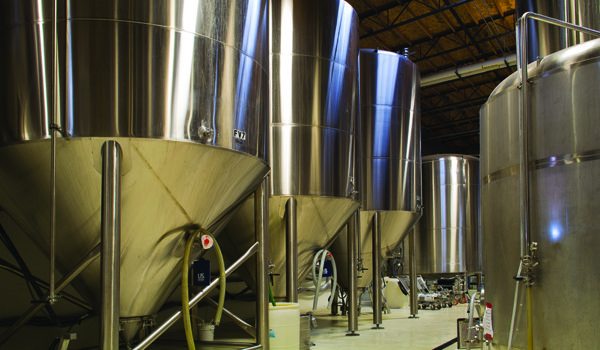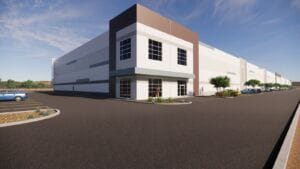Fifty-four-year-old Walter Crutchfield, principal and co-founding member of Phoenix-based development company Vintage Partners, is sipping on Oskar Blues Breweries’ Dale’s Pale Ale. It’s one of the beers hooked up to his office’s commercial grade tap, where craft beer flows often.
“It’s a true American industry,” Crutchfield says. In the last five years, the craft beer industry has grown 15 percent. He attributes this to Millennials turning 21 in a time when hop-forward flavored beers were trendy.
Crutchfield’s partner, Dave Scholl, testified for the passage of Senate Bill 1030, which would give Arizona’s 72 breweries the highest barrel cap in the country, and Vintage Partners approached the International Council of Shopping Centers’ lobbyists to support the bill.
“We recognized that you have 300 empty big boxes,” Crutchfield says. “The next generation of tenants is where real estate is. People got stuck on Target coming back. It didn’t. If we don’t think about cultivating the next generation of tenants, we won’t have those tenants.”
Vintage Partners, which has recently taken on renovating Uptown Plaza — a retail center that was once the epicenter of action in the ‘50s —is focusing on attracting breweries as tenants. While talking to local breweries about space, he says they mentioned being “stuck” by the then-current bill in terms of expansion.
“There’s no project we have that we’re not having some discussion with brewery or brewpub,” he says.
The dynamic of Uptown Plaza, he says, has flipped from being predominantly national tenants selling soft goods (such as clothing) to a gathering place where local shops and restaurants are the anchor tenants. In 2011, Arizona had 35 breweries that created $600M in direct economic impact and $1.2B in indirect economic impact. For every job held by a brewer, 45 jobs are created to support it.
There are some limitations breweries are facing while looking for adaptive reuse projects. Ceilings, says Brian Kocour, senior director of retail brokerage at Cushman & Wakefield, need to be 18 to 20 feet high to accommodate kettles and brewery systems. Though he says he’d like to see a “true brewery” in downtown Phoenix — potentially in the Luhrs building, where he’s currently leasing — he notes that older industrial buildings are not making the cut in downtown Phoenix. Nano breweries, such as Mother Bunch Brewing, are having better luck.
Breweries are also looking at nightlife hot spots like Old Town Scottsdale, where Chicago’s Two Brothers Brewing Company just opened in the former Saddle Ranch building. The two-story building was already tall, but the surface area available for seating was precious. Architect Erik Peterson, of PHX Architecture, says the firm decided to have the brewing “floating” between the floors and above the bar as a spectacle of a design feature as much as a necessary one.
“Every restaurant and bar is scouring the Valley for any sort of building with character,” he says. “We hear from restaurateurs that they’re visiting all buildings available through Scottsdale, Chandler and Phoenix to find those unique spaces that have open truss work or brick work to adapt for their restaurant … Even the ones that are coming from ground-up are incorporating things that make them look like old warehouses.”
It’s ultimately more expensive to make a building look old, Peterson says. The textured aesthetic created by brick, trusses and wood beams are atypical building features today.
Brewers are a bit romantic about the bones of a building and its story, says Rob Fullmer, executive director of Arizona Craft Beer Guild. Fullmer, before he turned his beer hobby into a career, worked in urban development, public policy and architecture, but he’s not alone. Brewers are constantly eyeing buildings with stories that often get incorporated into the product. For example, San Tan Brewing Company moved into a former Valley Bank building and has a “From the Vault” series of beer. Quite a few breweries are drooling over the former music store, Circles, in downtown Phoenix. For the rest of the people who may need to “manufacture” their brick-and-beer building, this could be the cause of delay in expansion plans.
“People don’t run businesses waiting for laws to pass,” Fullmer says. “They generally like to have a five- to 10-year plan. If they have a brewery in another state, they’re already planning somewhere else in five to 10 years. This bill puts us on the list of available places. It won’t have an immediate effect.”
The story of the bill itself was high profile in the brewing world, Fullmer says, adding that during a recent visit to Portland the story resonated with local brewers in Oregon.




